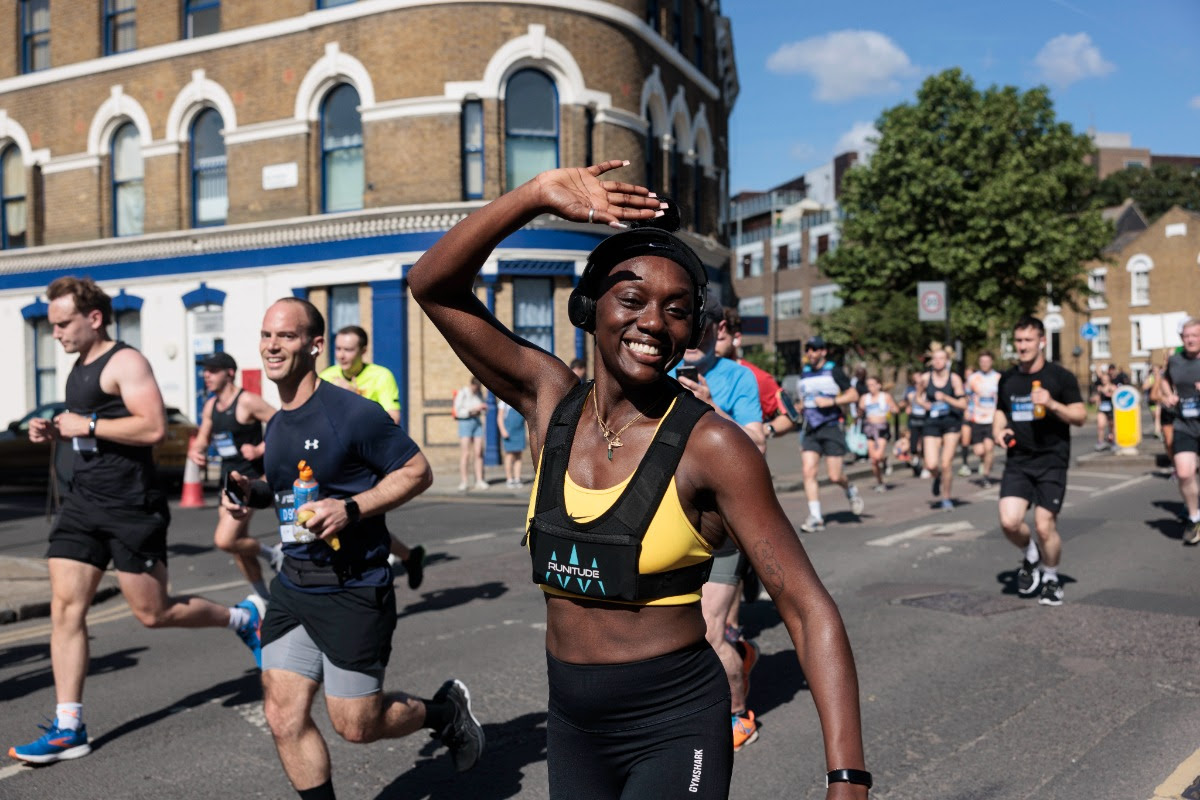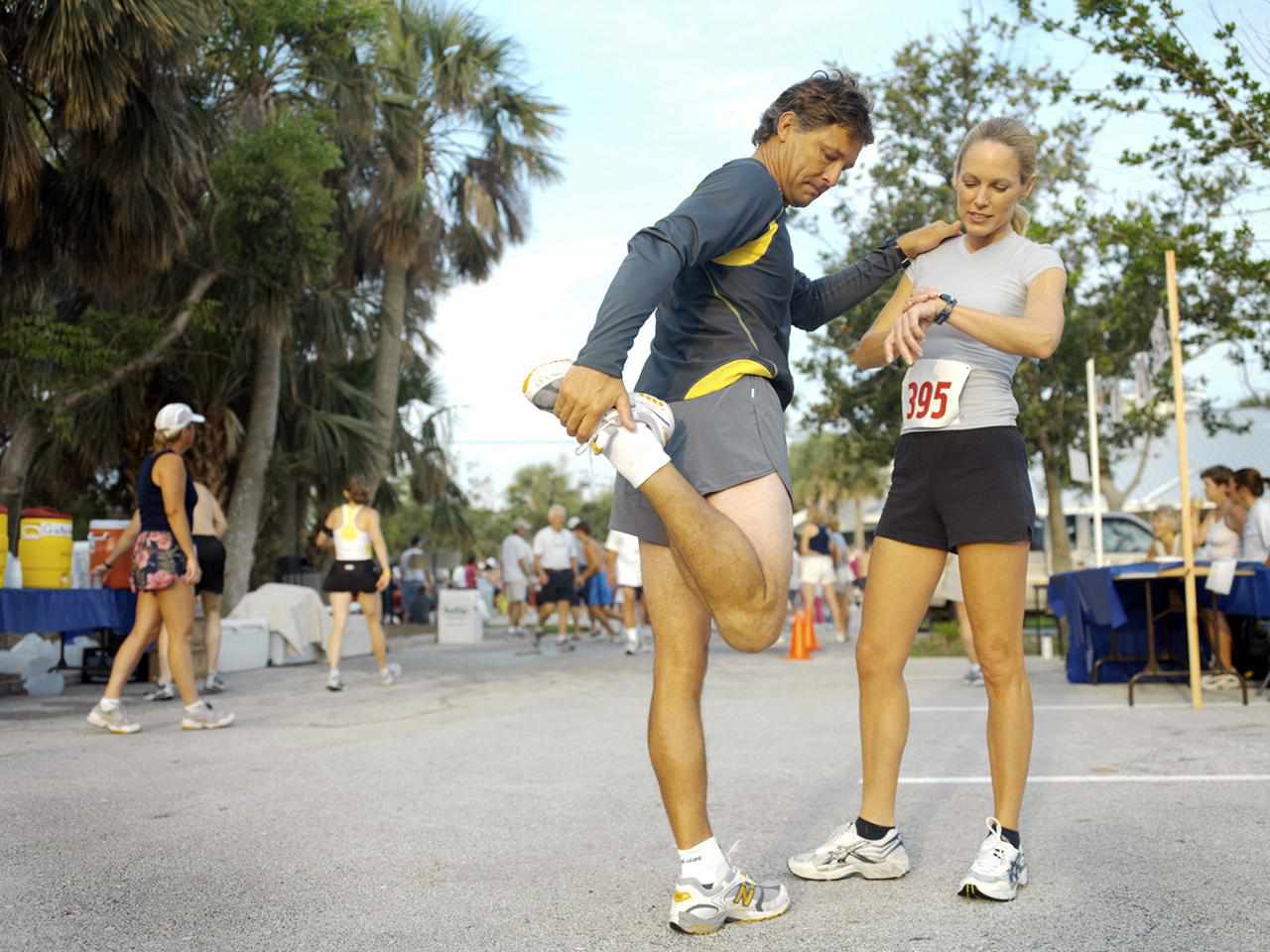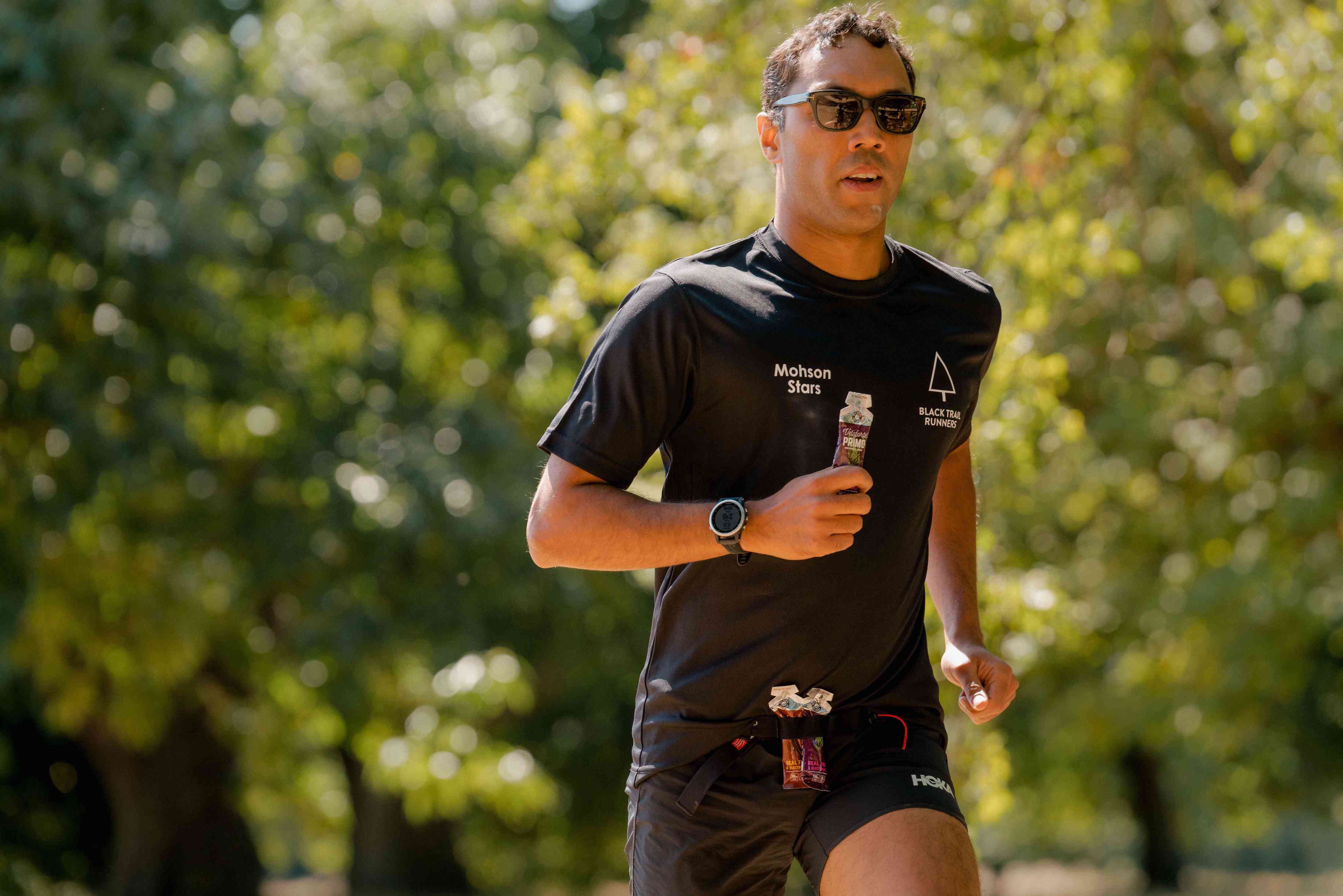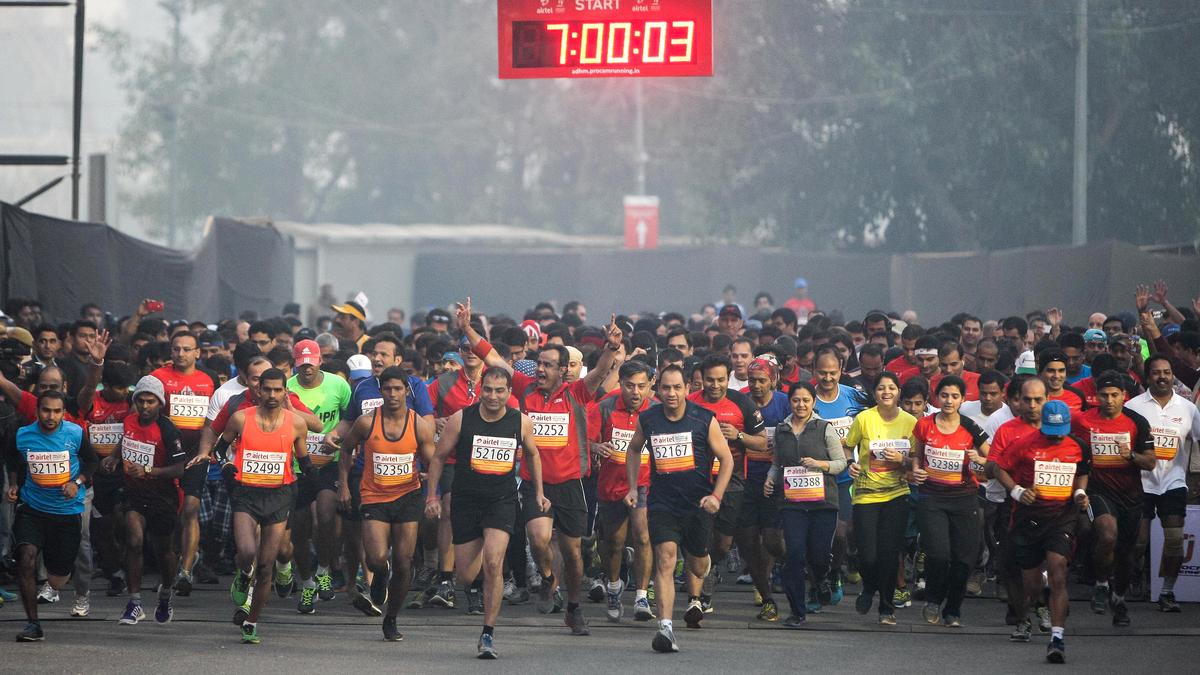Home>Misc>Featured>How To Figure Out Your Half Marathon Pace


Featured
How To Figure Out Your Half Marathon Pace
Modified: January 2, 2024
Discover how to calculate your half marathon pace with our featured guide. Learn the best strategies to improve your speed and reach your running goals.
Introduction
So, you’ve decided to take on the challenge of a half marathon – congratulations! A half marathon is a popular distance for both beginner and experienced runners, offering a significant challenge without the grueling training required for a full marathon. Whether you’re aiming to complete your first half marathon or looking to improve your previous time, one key element you need to understand is your pace.
Your half marathon pace refers to the speed at which you run each mile during the race. It’s a crucial factor in determining how long it will take you to complete the distance and achieving your desired result. Having a target pace will not only help you develop a realistic race strategy but also assist in pacing yourself properly throughout the event.
In this article, we will guide you through the steps to figure out your half marathon pace. By following these guidelines, you can set clear goals, plan your training sessions effectively, and optimize your performance on race day.
Before we dive into the details, it’s important to note that this article assumes you have a basic understanding of running and have been following a regular training routine. If you’re new to running or have not been consistently training, it’s advisable to consult with a running coach or medical professional before attempting a half marathon.
Now, lace up your running shoes, and let’s get started on discovering your half marathon pace!
Step 1: Understand the Half Marathon Distance
Before you can determine your half marathon pace, it’s important to have a clear understanding of the distance you will be running. A half marathon is exactly what its name suggests – half the distance of a full marathon. It covers a total of 13.1 miles or 21.1 kilometers.
Knowing the distance of a half marathon is essential as it allows you to calibrate your training and set realistic goals. It helps you to mentally prepare for the challenge ahead and develop a proper race strategy. Understanding the distance also enables you to pace yourself properly throughout the race, ensuring that you neither start too fast and burn out nor start too slow and fall behind.
One way to familiarize yourself with the half marathon distance is to visualize it in relation to familiar landmarks or distances you have already covered. For example, you can think of it as running approximately 13 miles, which is equivalent to running from your house to a nearby town or completing multiple laps around a standard track.
If you have access to a running app or GPS watch, you can also map out the specific half marathon course you will be participating in. This will give you a more accurate understanding of the route and help you identify any elevation changes or challenging sections you may encounter.
Another helpful tip is to participate in shorter races leading up to your half marathon. Running a 10K (6.2 miles) or a 15K (9.3 miles) event will not only allow you to assess your fitness level but also provide a sense of what it’s like to race a distance similar to half marathon. It will help build confidence and give you a benchmark to compare your pace and performance.
Understanding the half marathon distance is the first step towards figuring out your pace. By gaining a clear perspective on the distance, you will be better equipped to set realistic goals and approach your training and race with confidence.
Step 2: Set Your Goal Time
Once you have a solid grasp of the half marathon distance, the next step is to set a realistic goal time for your race. Your goal time will serve as a target to aim for during your training and will help you determine the pace you need to maintain throughout the race.
When setting your goal time, it’s important to consider your current fitness level, previous race performances, and training history. Be honest with yourself about your abilities and take into account any external factors that may affect your performance, such as weather conditions or the difficulty level of the course.
If you’re a beginner or new to the half marathon distance, it’s advisable to start with a conservative goal time. Focus on completing the race comfortably and enjoying the experience rather than aiming for a specific time. As you gain more experience and confidence, you can set more ambitious time goals for future races.
If you already have previous half marathon times or have recently run a shorter race, you can use those results as a reference point. A general rule of thumb is to aim for a goal time that is slightly faster than your most recent race pace. This will provide you with a realistic yet challenging target to strive for.
Remember that everyone has different abilities and goals, so your goal time should be personal and tailored to your own aspirations. It’s essential to set a time that motivates and excites you, while also being achievable based on your current fitness level.
Once you have established your goal time, write it down and keep it as a reminder during your training. It will serve as a constant source of motivation and keep you focused on working towards your desired outcome.
Setting a goal time is a crucial step in figuring out your half marathon pace. It helps provide a target to work towards and gives your training and race strategy a clear direction.
Step 3: Calculate Your Average Pace
Calculating your average pace is a fundamental aspect of figuring out your half marathon pace. It allows you to determine the speed at which you need to run each mile in order to achieve your goal time.
To calculate your average pace, you need to divide the total time it takes you to complete the half marathon distance by the number of miles. Let’s say your goal time is 2 hours and 30 minutes (150 minutes) for a 13.1-mile race. You would divide 150 minutes by 13.1 miles, which gives you an average pace of approximately 11.45 minutes per mile.
It’s important to note that pace is typically measured in minutes per mile or minutes per kilometer, depending on your preferred unit of measurement. The choice of unit is based on personal preference and familiarity, so use whatever format you feel most comfortable with.
Once you have calculated your average pace, write it down and keep it easily accessible. This will serve as a reference point during your training runs and allow you to gauge your progress towards your goal time.
Remember that your average pace is just a starting point. It’s a guideline to help you set a pace that aligns with your goal time. During the race, you may need to adjust your pace slightly to account for varying factors such as fatigue, terrain, or weather conditions.
Additionally, keep in mind that pacing during a race is rarely consistent for every mile. You may start slower to conserve energy or face challenges during certain sections that require a more cautious approach. The key is to maintain an average pace that allows you to stay on track for your goal time while being adaptable to the conditions of the race.
Calculating your average pace is an essential step in figuring out your half marathon pace. It provides a benchmark for your training runs and helps you stay on track during the race.
Step 4: Consider Your Training and Fitness Level
When figuring out your half marathon pace, it’s crucial to take into account your current training and fitness level. Your training and fitness will directly impact your ability to maintain a consistent pace throughout the race.
If you have been following a structured training plan leading up to the half marathon, take note of the workouts you have been completing. Assess the intensity, duration, and speed of your training runs. This will give you an idea of your current fitness level and the pace you are comfortable with during your training sessions.
If you are a beginner or have not been following a specific training plan, it’s essential to be realistic about your fitness level. Start by identifying the longest distance you have run comfortably in your training. This will provide a baseline for your half marathon pace.
Consider factors such as the frequency and consistency of your training. Have you been running consistently, or have there been breaks or interruptions in your training routine? This will affect your endurance and ability to maintain a specific pace throughout the race.
Additionally, take into account any recent injuries or health issues that may affect your performance. If you have been recovering from an injury or have any underlying health concerns, it’s important to adapt your pace accordingly and listen to your body to avoid further harm.
Remember that your pace should be challenging but within your capabilities. Pushing yourself too hard without proper training can lead to injuries or burnout. On the other hand, setting a pace that is too conservative may prevent you from reaching your full potential.
As you progress in your training and increase your fitness level, you may find that your pace naturally improves. Be open to adjusting your pace as you become stronger and fitter.
By considering your current training and fitness level, you can determine a pace that is appropriate for you. This will help you strike a balance between challenging yourself and maintaining a realistic approach to your half marathon pace.
Step 5: Adjust for Course Difficulty
When figuring out your half marathon pace, it’s important to consider the difficulty level of the course you will be running. Not all courses are created equal, and external factors such as elevation changes or uneven terrain can significantly impact your pace.
If you are running a flat and fast course, you may be able to maintain a consistent pace throughout the race. However, if the course includes steep hills or challenging terrain, you will need to make adjustments to your pace accordingly.
Start by researching the course map and elevation profile of the race you are participating in. Take note of any significant climbs or descents that you will encounter along the route. This will give you an idea of which parts of the race will require a slower pace or extra effort.
When approaching uphill sections, it’s important to conserve your energy and adjust your pace accordingly. Slow down slightly and focus on maintaining a steady effort level rather than trying to maintain the same pace as on flat terrain.
Similarly, downhill sections can be tricky. While it may be tempting to speed up and take advantage of the downhill, be cautious not to go too fast and risk losing control or injuring yourself. Adjust your pace to maintain a consistent effort level while still benefiting from the downhill momentum.
It’s worth noting that courses with varied terrain can offer a mix of challenges and advantages. Utilize flatter sections to make up for lost time on climbs and maintain your pace on the more difficult parts.
Adjusting for course difficulty requires a combination of mental preparation and adaptability during the race. Visualize yourself tackling the challenging sections and strategize how you will adjust your pace accordingly. By incorporating these adjustments into your training runs, you will be better prepared to tackle the course on race day.
Remember that every racecourse is unique, and it’s important to familiarize yourself with its specific challenges. By making adjustments for course difficulty, you will be able to run a smart and strategic race, maximizing your performance potential.
Step 6: Use a Pace Calculator
When it comes to figuring out your half marathon pace, using a pace calculator can be a valuable tool. A pace calculator is an online tool or mobile app that helps you determine the splits and pace needed to achieve your desired goal time.
To use a pace calculator, you typically input your goal time and the distance of the race (in this case, 13.1 miles). The calculator then generates a breakdown of the pace you need to maintain for each mile or kilometer of the race.
Using a pace calculator can be especially helpful if you prefer to see your pace expressed in minutes per mile or minutes per kilometer rather than average pace. It gives you a more detailed view of your race pace and allows you to track your progress throughout the distance.
Additionally, some pace calculators take into account factors such as course difficulty, weather conditions, and elevation changes. These calculators provide a more accurate prediction of your pace, considering the specific conditions you will be facing during the race.
Most running apps and smartwatches also have built-in pace calculators that can provide real-time feedback during your training runs. These tools allow you to monitor and adjust your pace on the go, helping you stay on track with your training goals.
It’s important to note that while pace calculators can be helpful, they should be used as a guide rather than a strict rule. Factors such as fatigue, race-day adrenaline, and external conditions can impact your actual pace. Use the data provided by the pace calculator as a reference point and make adjustments as necessary during the race.
By utilizing a pace calculator, you can gain a better understanding of the pace you need to maintain to achieve your goal time. It provides a practical and accessible way to track your pace and stay on target throughout your half marathon race.
Step 7: Practice and Fine-Tune Your Pace
Figuring out your half marathon pace is not just about calculations and predictions – it also requires practice and fine-tuning. Once you have determined your target pace, it’s essential to incorporate it into your training and gain a feel for maintaining that pace over longer distances.
During your training runs, focus on pacing yourself at your desired half marathon pace for extended periods of time. This will help you develop a sense of rhythm and build the necessary endurance to maintain that pace throughout the race.
Consider incorporating tempo runs into your training routine. Tempo runs are workouts where you sustain a challenging but manageable pace for a sustained period of time. These runs help you develop the mental and physical fortitude to maintain a consistent pace, even when fatigue sets in.
Another effective way to practice and fine-tune your pace is by participating in shorter races or time trials. This allows you to gauge your progress and assess your ability to maintain your target pace over a specific distance.
Pay attention to your breathing and effort level during your training runs. Aim to maintain a pace that feels comfortably challenging without pushing you to the point of exhaustion. Find a rhythm that allows you to sustain your pace and remain in control throughout the half marathon.
Regularly evaluate and adjust your pace if needed. As you become more attuned to your body and running ability, you may find that your initial goal time or pace needs revision. Be flexible and open to modifying your plan based on your training progress and fitness level.
Practice running on various types of terrain and in varying weather conditions to prepare yourself for race day challenges. Simulating race scenarios during your training will help you become adaptable and confident in maintaining your pace regardless of external factors.
Fine-tuning your pace is an ongoing process that may continue even after you have completed your half marathon. Take note of your performance, analyze your race results, and reflect on areas for improvement. This will enable you to continuously refine your pace and set new goals for future races.
Remember, half marathon pace is not solely about numbers and calculations. It’s about finding your rhythm, listening to your body, and understanding what pace works best for you. Through practice and fine-tuning, you will develop the necessary skills to run at your optimum pace and achieve your desired half marathon result.
Conclusion
Figuring out your half marathon pace is a crucial step in preparing for a successful race. By understanding the distance, setting realistic goal times, calculating your average pace, considering your training and fitness level, adjusting for course difficulty, using a pace calculator, and practicing to fine-tune your pace, you can optimize your performance and achieve your desired results.
Remember, determining your half marathon pace is not an exact science and may require adjustments along the way. Allow yourself the flexibility to adapt your pace based on your progress and the conditions you will face on race day.
Additionally, always prioritize your overall well-being. If during your training you experience any discomfort, fatigue, or signs of overexertion, listen to your body and make necessary adjustments to your training plan and pace.
By following the steps outlined in this guide, you can confidently approach your half marathon with a clear pace strategy, improving your chances of reaching your goals and enjoying a memorable race experience.
Remember, running a half marathon is not just about the finish line, but also about the journey and the personal growth you experience along the way. Embrace the challenge, enjoy the process, and celebrate your achievements, regardless of your final time.
Now, lace up your running shoes, set your pace, and embark on an incredible half marathon journey!









